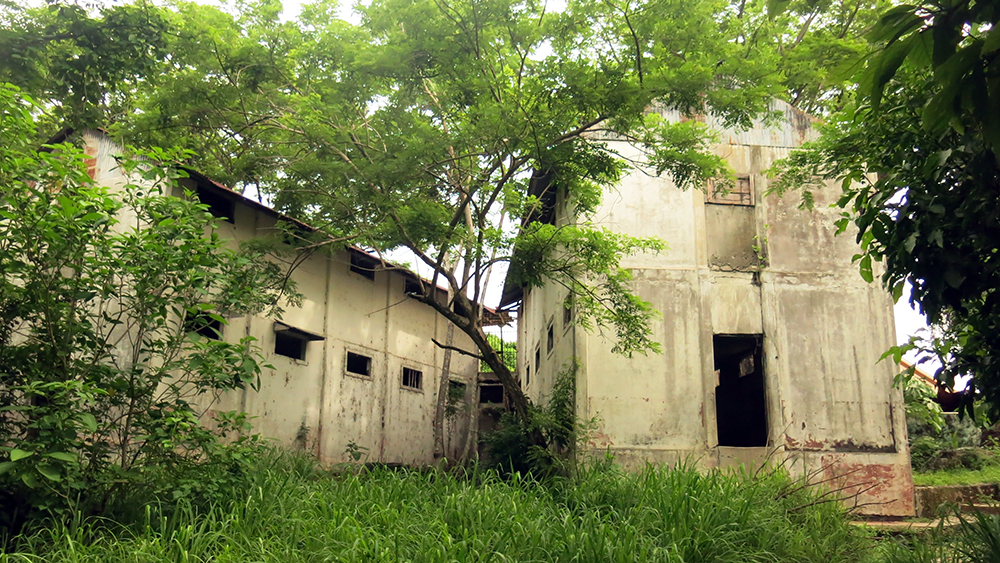
The prison cell blocks on Isla San Lucas
Isla San Lucas, a lush tropical island on the remote west coast of the Golfo de Nicoya in Costa Rica, looks like paradise but has a notorious history. The island has been a penal colony since the time of the conquistadors in the 16th century and served as Costa Rica’s Alcatraz until the prison was finally abandoned in 1991. The prison is open to look around and the graffiti on the cell blocks is well known for it’s artistry and interesting subject matter.
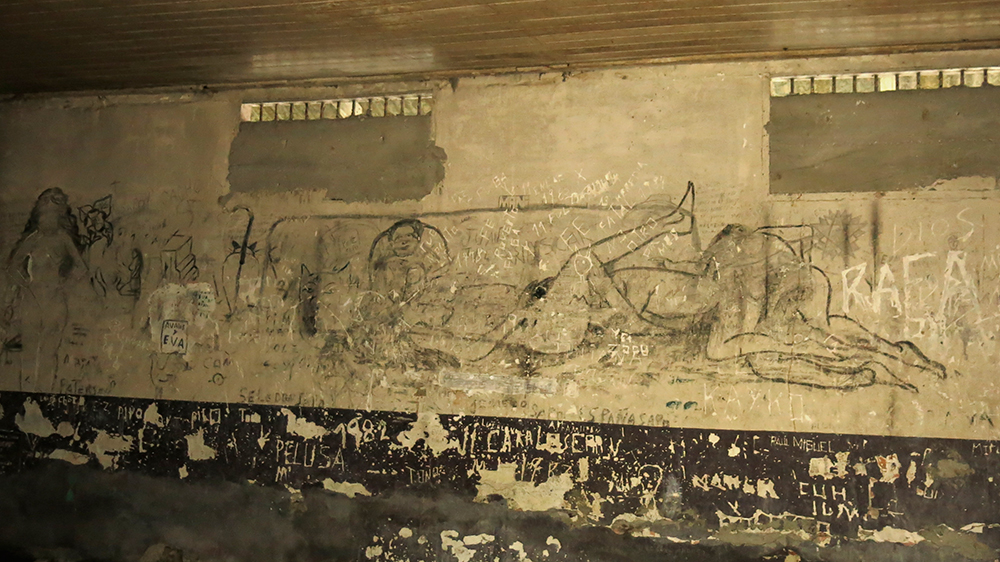
I guess these men were missing their wives!
The graffiti was amazing; not surprisingly much of the art featured religious images or naked women but there were other drawings of boats, houses, animals, sports and a host of other things that the prisoners were longing for.
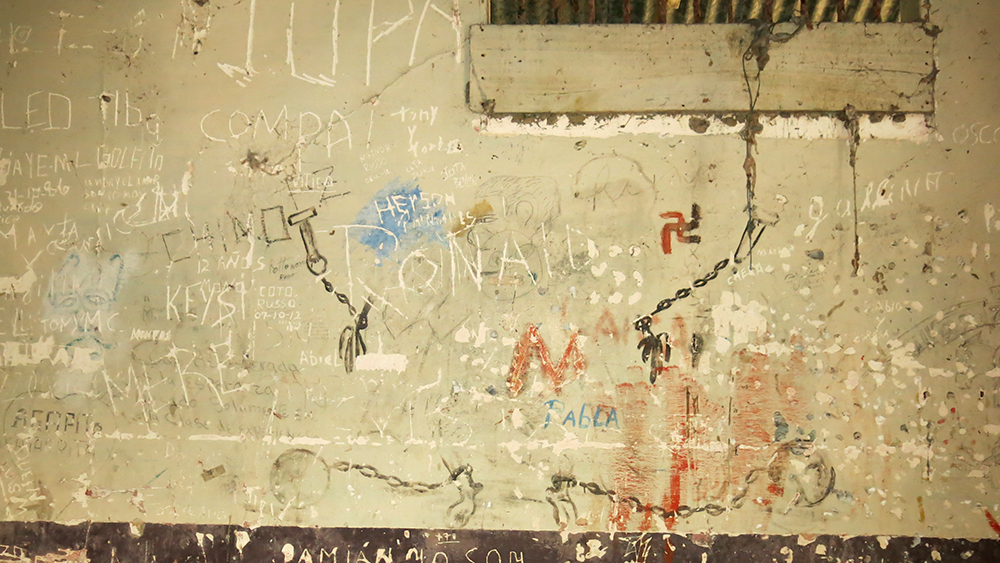
The invisible man
I was fascinated by this drawing of mancled hands and feet shackled to a ball and chain, yet the immobilzed man is not there. Is it unfinished or symbolic? Suggesting prisoners are non-men, insignificant and forgotten, or that their limbs maybe bound but their souls are free? The ball and chain were finally ditched in the 1960’s – truly the age of liberation!

The famous girl in the bikini
Tourists from the mainland visit here at weekends; the prison is legendary and the painting of the girl in the bikini is famous on the internet. It has been recently vandalized as images on the web show it to be more colourful and intact without the scratches which deface it now.
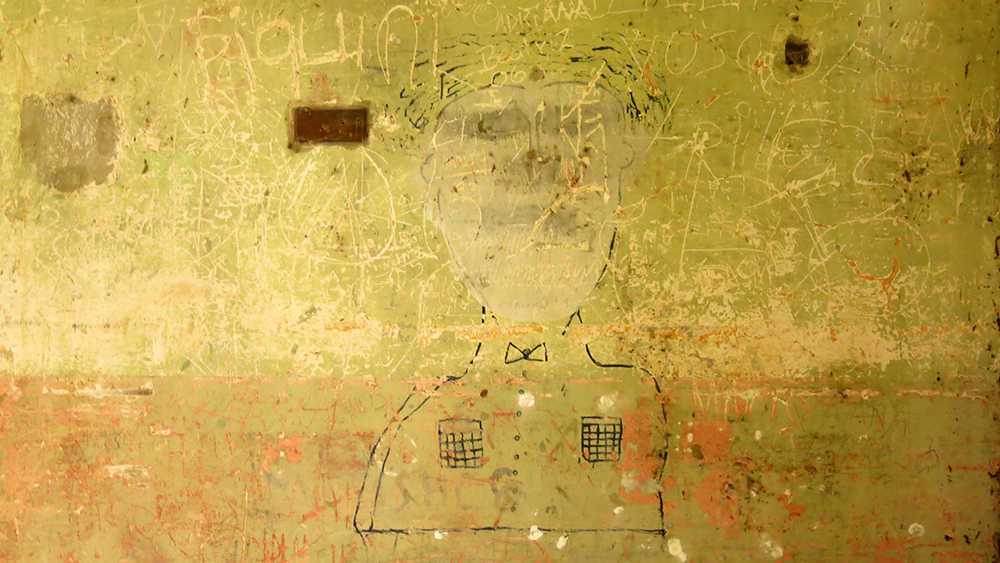
A strangely sinister drawing of a prison guard
In his memoir “Island of Lonely Men” Jose Leon Sanchez describes his thirty years of incarceration on Isla San Lucas. He was imprisoned for stealing some jewelled treasure from a basilica but was innocent, or so the story goes. He was set up by the father of his girlfriend who obviously was unhappy with the match and adopted rather extreme measures to remove him.
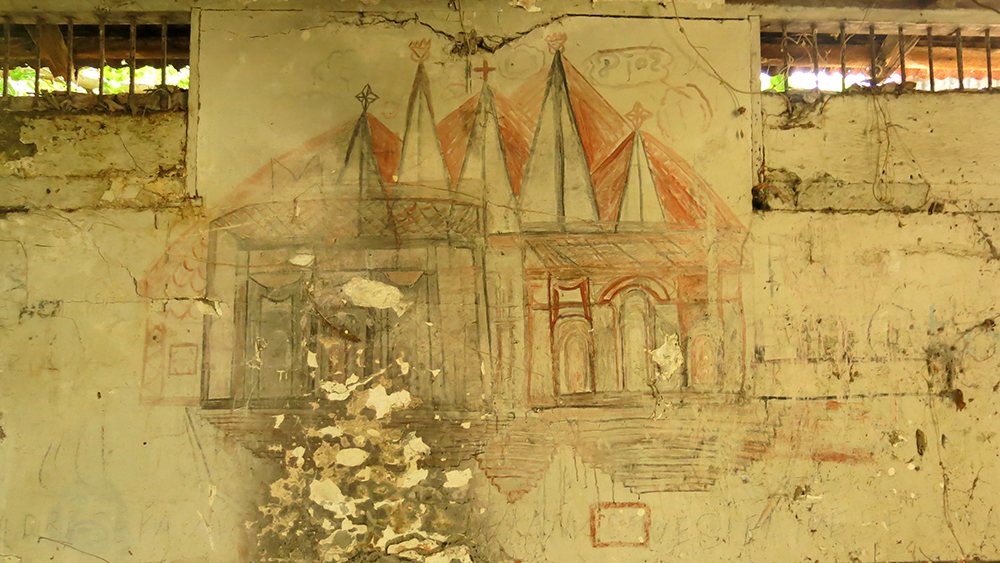
A memory of a church
Visiting the prison at night was a completely different experience. Neil was keen and initially I was very reluctant, but having been there twice during the day I began to feel more comfortable with the idea. We landed the kayak on the beach and we brushed through spiders webs as we walked up to the Boulevard of Bitterness. The arched gatehouse looked like a ruined abbey at night as we passed through to the prison yard.

A fantastic drawing of a motorcycle
We lit four candles which we placed near the hole at the centre of the cistern. The cell blocks lit-up by the candlelight seemed more mellow at night, the mould and and rot so visible in daylight was hidden in the shadows.
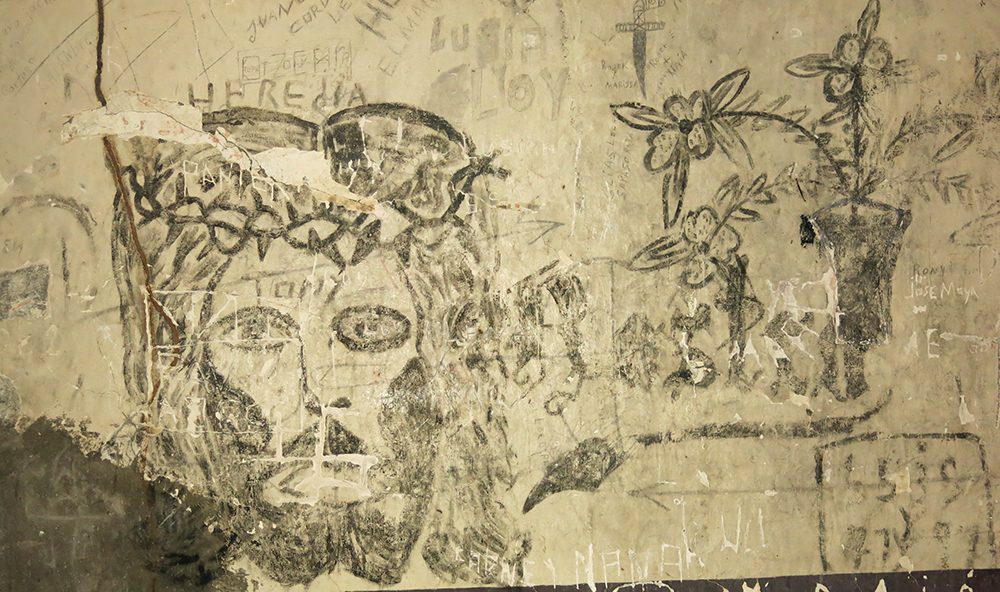
We turned off our torches and the world reduced to the range illuminated by the candles; the prison yard, the cell blocks and the governors house. With only pain, misery and despair all around and no hope for the future this would have been the entire world for the prisoners incarcerated here.
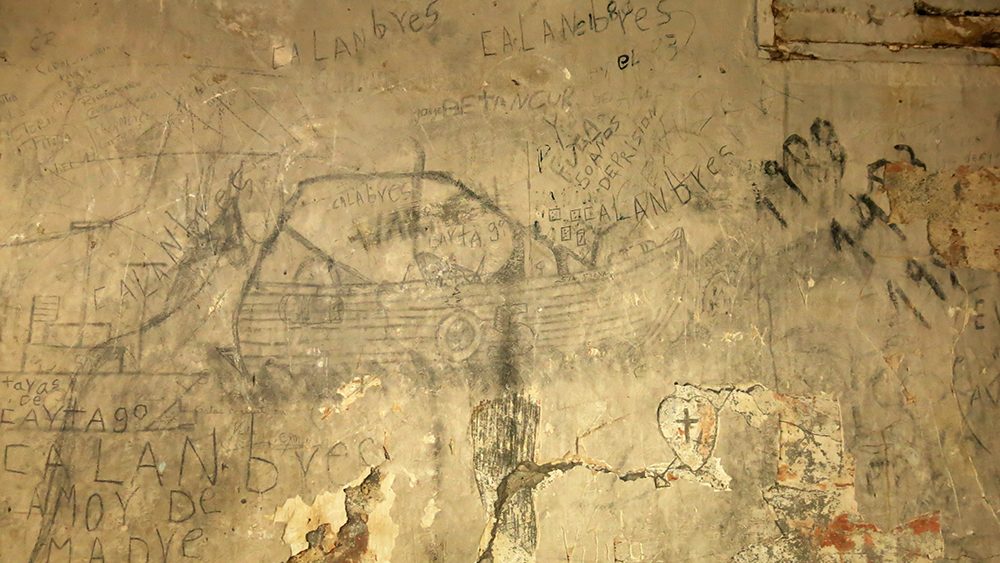
Dreaming of escape
We finally we had a starry night with no clouds and looking up I could see the Big Dipper pointing to the north star. As well as providing a way of measuring time, their permanence and dependability may have supplied a connection with the outside world; seeing the same stars as loved ones left behind. Maybe the prisoners enjoyed watching the fireflies, their luminous green lights bouncing around the prison walls.
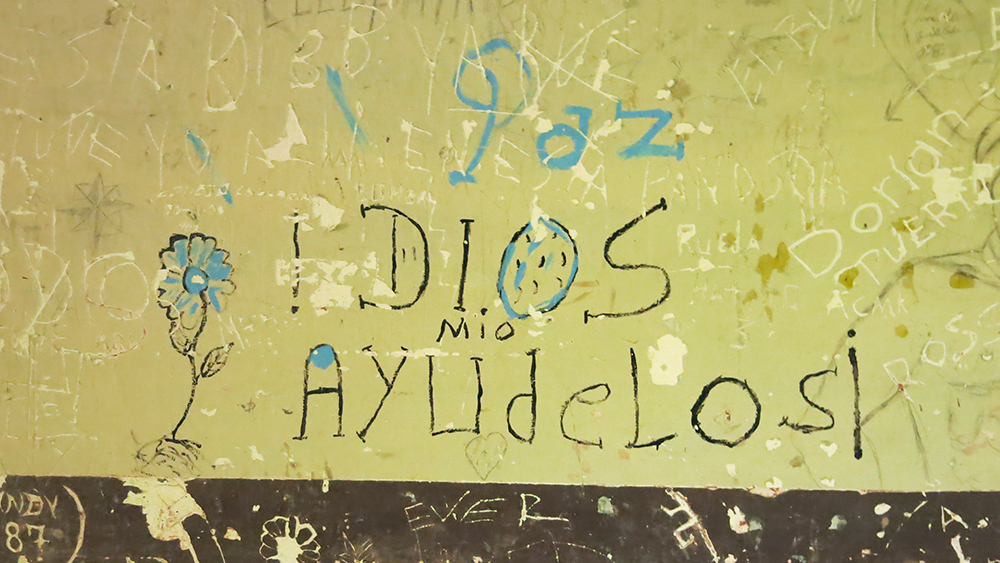
My God – help them!
Visiting the prison at night was a moving and surprisingly undisturbing experience. Evenso I was glad to see Distant Drummer’s anchor light beckoning us as we paddled back through the phosphorescent water.
Suzy
